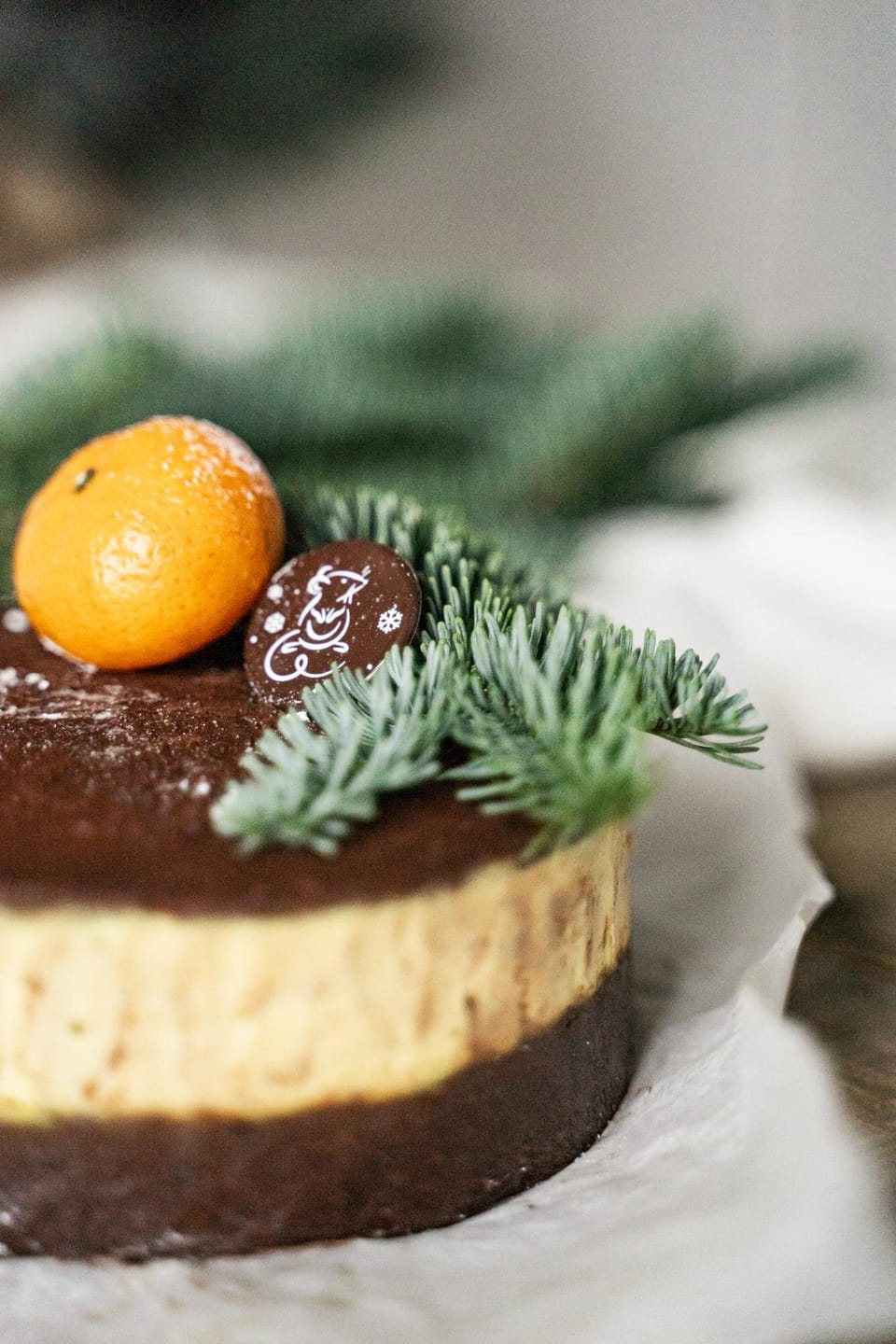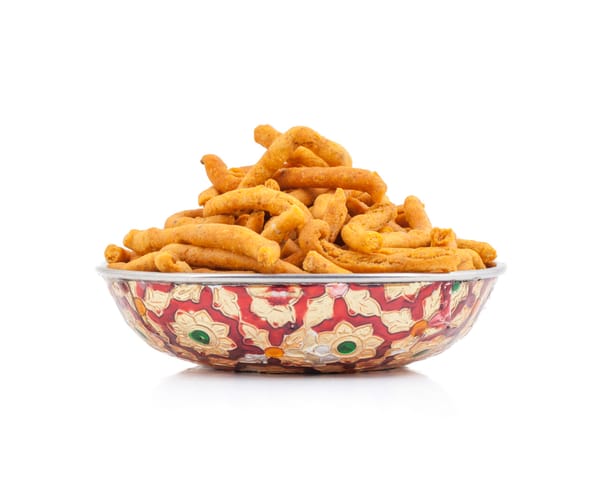There's a certain magic in the air when Christmas rolls around, and in my family, that magic has always been encapsulated by the rich, creamy texture of a traditional Polish cheesecake, or 'Sernik.' This recipe is steeped in nostalgia and perfected through generations. The first time I attempted this dish, I was ambitious but inexperienced, and I learned quickly that cheesecake demands patience and precision. The result of my perseverance is this foolproof recipe, a blend of velvety cheese and a hint of vanilla, nestled on a buttery crust that's been a holiday staple in my home.
I first came across this Polish Christmas cheesecake in my grandmother's dog-eared recipe card, stained with vanilla extract and dusted with flour. I remember underbaking it the first time, yielding a wobbly center that never quite set. It's essential to trust the process and the specified timings. After many holiday seasons and a few tweaks here and there, I've honed this recipe to what I believe is cheesecake perfection. Let's walk through the steps together, so you can bring a slice of Polish tradition to your Christmas table.
Ingredients
For the crust
- Unsalted butter — 1/2 cup (115g), melted
- Granulated sugar — 1/4 cup (50g)
- All-purpose flour — 1 1/2 cups (180g)
- Baking powder — 1 tsp
- Salt — a pinch
For the filling
- Full-fat farmer's cheese (twaróg) — 2 lbs (900g), well-drained
- Granulated sugar — 1 cup (200g)
- Unsalted butter — 1/2 cup (115g), room temperature
- Large eggs — 4, room temperature
- Sour cream — 1 cup (240g)
- All-purpose flour — 2 tbsp (16g)
- Vanilla extract — 2 tsp
- Lemon zest — from 1 lemon
- Raisins — 1/2 cup (75g), optional
- Powdered sugar — for dusting
Instructions
- Begin by preheating your oven to 350°F (175°C). For the crust, combine the melted butter, granulated sugar, flour, baking powder, and a pinch of salt in a bowl. Mix until a soft dough forms. Press this mixture into the bottom of a greased 9-inch (23cm) springform pan, ensuring it's even and compact. I learned the hard way that an uneven crust can lead to an unevenly cooked cheesecake, so take your time with this step.
- For the filling, the key is to have your ingredients at room temperature. Beat the farmer's cheese in a large bowl until smooth. In a separate bowl, cream together the butter and sugar until light and fluffy. This process, known as creaming, is crucial as it incorporates air into the batter, giving the cheesecake a lighter texture.
- Gradually add the eggs to the butter and sugar mixture, one at a time, beating well after each addition. I once added them all at once and ended up with a lumpy batter, a mistake I'll never make again. Patience here ensures a silky-smooth filling.
- Blend the egg mixture into the farmer's cheese, then stir in the sour cream, flour, vanilla extract, and lemon zest. If you're using raisins, now's the time to fold them in gently. The zest and vanilla are more than just flavor enhancers; they're the subtle undertones that give this cheesecake its distinctive character.
- Pour the filling over the crust in the springform pan. Tap the pan gently on the counter to release any air bubbles — a trick I learned after noticing unsightly holes in my first few attempts.
- Bake in the preheated oven for 50-60 minutes. The cheesecake should be set around the edges but still slightly wobbly in the center. A common mistake is to overbake, which I did once, resulting in a dry, cracked top. Remember, the cheesecake will continue to set as it cools.
- Turn off the oven and crack the door open, letting the cheesecake cool inside for an hour. This gradual cooling helps prevent cracking, a tip passed down from my grandmother that has saved many a cheesecake.
- Once cooled, remove the cheesecake from the oven and chill in the refrigerator for at least 4 hours, preferably overnight. The chilling time not only solidifies the cheesecake but also deepens the flavors, making the wait worthwhile.
- Before serving, dust the top with powdered sugar for a festive touch. I've always been apprehensive about using too much, but a light dusting adds a hint of sweetness and a snow-like appearance perfect for Christmas.
Substitutions
- Farmer's cheese (twaróg) — If you can't find traditional Polish farmer's cheese, a mixture of ricotta and cream cheese (in equal parts) can be used as a substitute. The texture will be slightly different, but it's a good alternative that I've used when twaróg was unavailable.
- Raisins — Not everyone is a fan of raisins in their cheesecake. They can be omitted or replaced with dried cranberries for a tart contrast, which I've found to be a delightful twist.
Variations
- Chocolate swirl — For a decadent twist, I've swirled melted dark chocolate into the filling before baking. It creates a beautiful marbled effect and adds a rich chocolate flavor that's irresistible.
- Almond crust — If you're looking to add a nutty flavor, replace half of the all-purpose flour in the crust with finely ground almonds. It's a simple substitution that adds a whole new dimension to the dish.
Dietary Restrictions
- Gluten-free — To make this cheesecake gluten-free, use a gluten-free flour blend in place of all-purpose flour for the crust. Ensure that the blend is a 1:1 substitute for best results.
- Lactose-free — Lactose-free dairy products can be used for the filling and crust. However, finding a lactose-free farmer's cheese might be challenging, so the ricotta and cream cheese substitute may be your best bet.
Equipment
- 9-inch (23cm) springform pan
- Electric mixer
- Mixing bowls
- Measuring cups and spoons
- Rubber spatula
- Sieve (for dusting powdered sugar)
Storage and Reheating
- Leftover cheesecake can be covered and stored in the refrigerator for up to 5 days. I've found that the flavors meld beautifully overnight, making it even more delicious the next day.
- For longer storage, the cheesecake can be frozen for up to 2 months. Wrap it tightly in plastic wrap and then foil. Thaw in the refrigerator overnight before serving.
Pro Tips
- Smooth farmer's cheese — To achieve the smoothest texture for your cheesecake, pass the farmer's cheese through a fine sieve or cheesecloth before using. This extra step ensures there are no lumps in your filling.
- Room temperature ingredients — Ensure all your filling ingredients are at room temperature before starting. This makes a significant difference in the texture of the cheesecake, as cold ingredients can lead to a lumpy batter.
- Don't overmix — Once you add the eggs, mix just until combined. Overmixing can incorporate too much air, leading to a cheesecake that rises and falls dramatically, causing cracks.





